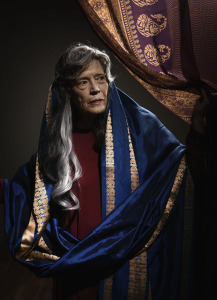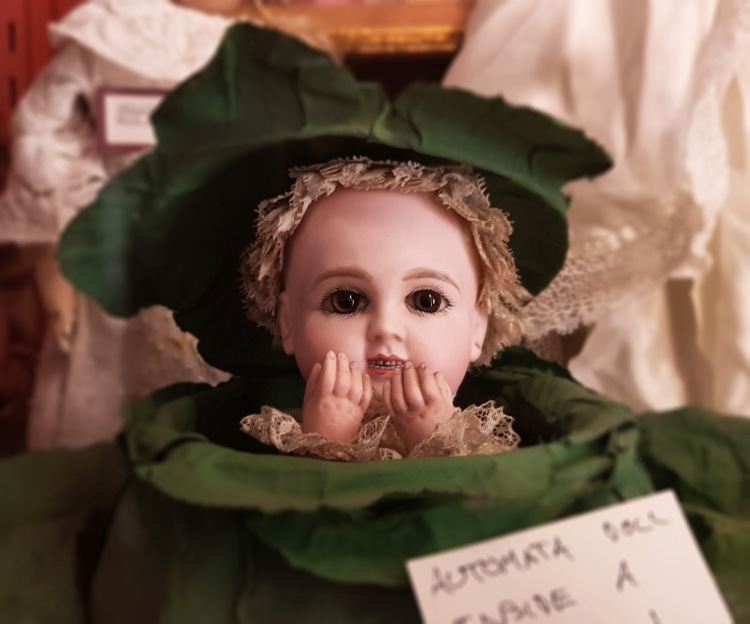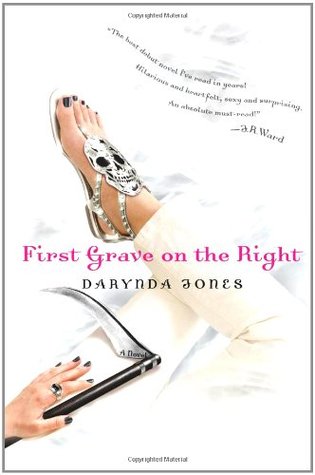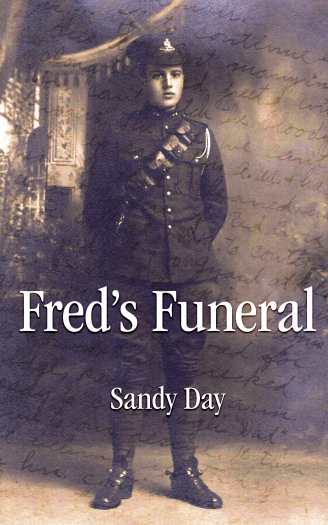
Holly Turner in The Testament of Mary. Photo supplied.
Walking into the PCL Studio Theatre, you are confronted with lights strung across the stage, separating the audience from the playing space. The lights are reminiscent of a barbed wire fence and are positioned so closely to the audience separating the audience that it feels confrontational. We know this is not to be a happy story.
The Testament of Mary by Colm Tóibín kicks off Northern Light Theatre’s 42nd season, titled ‘The Virgin, The Whore, and Something In Between’, and plays at the PCL Studio Theatre until November 4.
In The Testament of Mary, we meet a Mary whose son (she can’t use his name) died years ago and, in the small house where she’s more a prisoner than a guest, she relives the years and hours before his death over and over again. The thing is she knows he is her son – not the son of God. She knows if he did raise Lazarus from the dead (which she deeply feels it was not his place to do), it was not as someone who was truly living. She believes additional jugs of wine were found at the wedding in Cana, not that her son turned water into wine.
You can see why The Testament of Mary can be considered controversial.
But for one unfamiliar with the Bible, The Testament of Mary is not really the story of Mary, mother of Jesus. It’s a story about any mother who is trying to cope with grief, and especially with witnessing the violent death of her son. In the specifics, we find the universality.
It’s also a story that seems to touch on gaslighting, with Mary starting to question her memory as she’s manipulated by those around her. She is told stories about the life of her son and questioned about things that didn’t happen again and again by her “visitors” or “guards” (implied to be two of the apostles). The only problem is their stories conflict with her memories of the events. She has no time for these apostles, who she essentially thinks of as losers – a band of misfits and people who live on the edges of society whom she can’t fathom why her son chose to surround himself with. While the apostles’ goal is not to make her question her sanity, Mary clearly frames their mission in terms of what they stand to gain by mythologizing her son’s life and death. This is a quest for the power to determine what ‘the truth’ will be known as millennia from the actual events.
In the lead role, actress Holly Turner does an excellent job in moving between states of being absolutely certain of what she witnessed, and a sense of uncertainty about what she remembers. She confidently tells a story, and then pauses or looks away as though questioning her memory. She looks as if she’s about to try to pray, and then discovers she can’t and turns away. She puts on a shawl, walks around and then takes it off and tries on another.

Holly Turner in The Testament of Mary. Photo credit: Ian Jackson of Epic Photography.
Through Holly’s portrayal of Mary, we see not only the confusion between who she knew her son to be and who his followers say he was, but the trauma inflicted upon her in watching her son being tortured to death. There is no Pietà, only memories of her son moaning in pain, the spectacle of the crowd of his supporters eager for his death (and therefore their redemption), a man feeding live rabbits to a bird of prey while the cage filled with half-dead rabbits, all concluding in a fearful flight for her life away from the scene of the crucifix.
In the pacing of the show, it’s clear that Mary has had this conversation, these thoughts, before. Holly starts out speaking quickly, telling her stories as if by memory, and then becomes more deliberate and thoughtful, with longer pauses between her statements, as she mulls over the most painful parts of her story. Colm Tóibín’s script is dense – this is not an easy performance to deliver, but Holly does it with stamina that sustains her character’s restlessness, confusion and curiosity about the truth.
The Testament of Mary takes place against a set with stunning black and red aesthetics designed by Director, Costume and Set Designer Trevor Schmidt. Serving primarily as Mary’s safehouse, the three red panels positioned at an angle undergo a chilling transformation late in the play that I can’t describe (although, it made my stomach drop) – you just have to see it.
The Testament of Mary plays at the PCL Studio Theatre in the ATB Financial Arts Barns until November 4. Tickets are $20 – $30 through Northern Light Theatre’s box office, or to see all three shows in NLT’s season, you can purchase a season subscription for $40 – $75.
Special events are as follows:
- October 29 @ 1:15 p.m.: Director’s Circle with Trevor Schmidt
- October 31 @ 7:30 p.m.: Two-for-one tickets at the door
- November 1 @ 7:30: Guest speaker salon hosted by Cristina Stasia
- November 2 after the show: Post-show actor’s talk-back
I’ve heard that the posters for The Testament of Mary in Old Strathcona have been vandalised or removed since opening night. In a world where we can cater the type of news and opinions we want to see, art that sparks a conversation and exploration of ideas is more necessary than ever. Vandalising the show’s posters does not contribute to dialogue; it’s an end to the conversation. As was stated in my preview interview with Trevor and Holly, Northern Light Theatre invites those who are opposed to the ideas of the show to engage in a dialogue, including the talk-backs mentioned above. Trevor said, “We’d be happy to host you at our talkback panel. We’d love to have your voice hear as well because that’s really important. We’d welcome you contacting us.”
Advertisements Share this:




